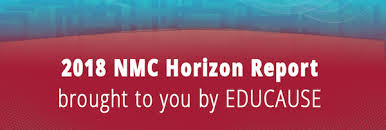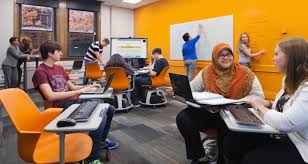Even though I work fulltime in a library, it seems the minutes I get to spend with new books must be intentional and sometimes a bit rushed. I would love to curl up in a chair with a cart of books beside me to savour new samplings for the collection.
As things are unusually quiet on the desk today, I can take a moment to look at what is new and cool in the areas that I spend the most time with.
My favourite book of the new batch is The Girl with a Mind for Math: The Story of Raye Montague, written by Julia Finley Mosca and illustrated by Daniel Rieley. The subject of this nonfiction picture book is Raye Montague, one of the many hidden figures whose innovation changed the way navy ships are built. She overcame exceptional odds being a black woman in the 1950s to design, in 1971, the FFG-7 Frigate. Using her own computer programs, she completed the design of the frigate in 18 hours and 26 minutes. The accompanying notes, bibliography and time line, all contribute to the wealth of information in this book. The big problem I have with it is that it is written in verse. What a shame. The story would stand better is some well-written prose to showcase the power of her accomplishments. This book can be included in classrooms up to grade 6 as students learn how to write biographical information, consider time lines of famous people, and collect biographic research about historical figures and just for students to ponder the strength and tenaciousness of this intelligent woman.
Doll-E 1.0 by Shanda McCloskey would be a great book to have in your classroom. From grades K-3, girls will recognize the pressure (sometimes from parents) to play with dolls but our main character, Charlotte, incorporates her “making” into traditional play. Charlotte is a maker and a tinkerer. Although her house seems full of opportunities for her to indulge her maker imagination, Charlotte’s mother gives her a doll. Just a doll. It says “mama.” As Charlotte puts her mind to it, knowing that a doll who talks must also have a power supply, she unleashes her “making” and inventions and innovations ensue.
Two books have recently come in that would be great “browsers” to have in your classroom to spur students on to learn about innovative ideas. Engineered! Engineering Design at Work: A fun exploration of nine amazing feats by Shannon Hunt and James Gulliver Hancock looks at 9 different amazing feats of engineering from the following fields: aerospace, biomedical, chemical, mechanical, electrical, civil, geomatics, computer and environmental engineering. Examples like the Millau Viaduct, a traffic problem solving bridge that was built on time and on budget and solved a major traffic issue in France. The innovative design is an engineering feat and a work of art. Innovation Nation: How Canadian innovators made the world …smarter, smaller, kinder, safer, healthier, wealthier, happier by David Johnston and Tom Jenkins, illustrated by Josh Holinaty would also provide a great browsing experience in any classroom. Pages 124-125 give a two page spread on “How you can be an innovator,” listing ways to inquire, ideate, incubate and implement ideas and what steps to take within each action to be the best innovator ever. I also loved reading about the invention and pick up of JAVA script and the plastic garbage bad and something known as the “shrouded tuyere,” a way to stir steel invented by Robert Lee who came up with the idea after tooting in the bathtub. Innovation is everywhere. Both these books would be valuable in middle grades.
And now about that edict to have your students coding from k-12. There are some easy ways to get students coding in your classroom but what if one of the ways was to read a picture book. How to Code a Sandcastle by Josh Funk, illustrated by Sara Palacios is not an excellent picture book but does present the ideas and vocabulary that are foundational in coding and anchors it to a familiar activity, building a sandcastle. Look for working definitions of sequence, loops, and “if-then-else” statements. Having one of these books in your collection is plenty and this one does the job. Keep this one to the early grades.
Get Coding! Learn HTML, CSS, and JAVAscript and build a website, app and game by Young Rewired State is an attractive sort of book of challenges where you work through various coding recipes to make a website, app and a game. This book would be great in a classroom where every year now you will be able to reach some of your students through these coding challenges. Now, keep in mind, that coding books like this are awesome usually for a short time so buy it now and use it. In September Get Coding2 is coming out and will be full of new challenges. I would say to start kids in grade 3 with these tasks and use this book through grade 9 or 10.
Sometimes when I am looking for a new approach to educational technology I fall back on an old library habit. See what the new books look like and how can they be used to engage students in new ed tech challenges. This list has a little something for everyone. They will be included in the Doucette collection later this week for your use. And I do feel a sense of renewal now that I have touched a few new books.








